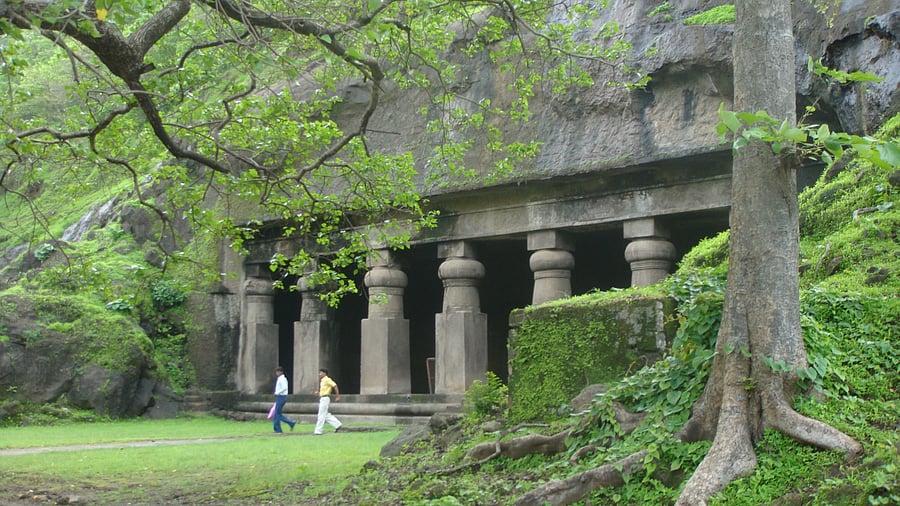
Elephanta Caves.
IMAGE COURTESY WIKIPEDIA
After a few days of navigating the bustling streets and towering skyscrapers of Mumbai, visitors often crave a retreat into tranquillity. For those seeking respite from the city’s chaos, the Elephanta Caves offer a serene escape.
Located on a small island in the Arabian Sea, approximately ten kilometres northeast of the Gateway of India, reaching Elephanta Island is an adventure in itself. The journey begins with a seventy-five-minute boat ride, followed by a mini-train ride to the base of a hill. From there, visitors embark on a short walk and climb about 120 steps to reach the cave temples. Surrounded by dense forests and mangrove bushes, Elephanta Island was historically known as Gharapuri, signifying a town of Shudra priests of the Shaivite temple. The island acquired its current name, Elephanta Caves, from the Portuguese, who arrived in the 15th century. It is believed that a colossal elephant statue once stood in the caves, although it has since been relocated to Victoria Garden in Byculla, Mumbai.
The caves are part of a chain of cave temples in India, and they rank among Maharashtra’s most magnificent rock architecture achievements. The sculptures, including the famous three-headed Shiva, exemplify unique artistic creations from the medieval period, flourishing during the Gupta era. Upon entering the Main Cave and beholding the awe-inspiring three-headed Shiva, visitors are captivated by the sculpture’s majestic presence. Representing Shiva as the creator, preserver, and destroyer, the idol embodies the supreme deity. The sculpture’s right half depicts Shiva as the creator, the left as the destroyer, and the central face as the preserver, symbolising harmony in existence.
The Trimurti sculpture, showcasing Shiva’s three aspects, has become an iconic symbol, featured in the logo of the Maharashtra Tourism Development Corporation. Adjacent to the Trimurti is the Gangadhara image, portraying divinities surrounding Shiva and Parvathi, with Vishnu and Indra to their right, and Brahma to their left. Further exploration reveals the Ardhanarishwara carving, representing Shiva in union with Shakti, and the yogic position of Shiva, known as Yogishvara. The west niche features Shiva as Nataraja, performing the cosmic dance, symbolising the motion of the universe. The main cave shrine houses a Linga, symbolising Shiva in union with Parvathi, representing the supreme unity revered by the shrine. Additionally, the cave complex features depictions of Ashta Matrikas (eight mother Goddesses), Karthikeya, Ganesha, and other celestial beings. While the other caves lack notable sculptures, the main cave stands as a testament to Indian art’s perfection, particularly evident in its huge reliefs.